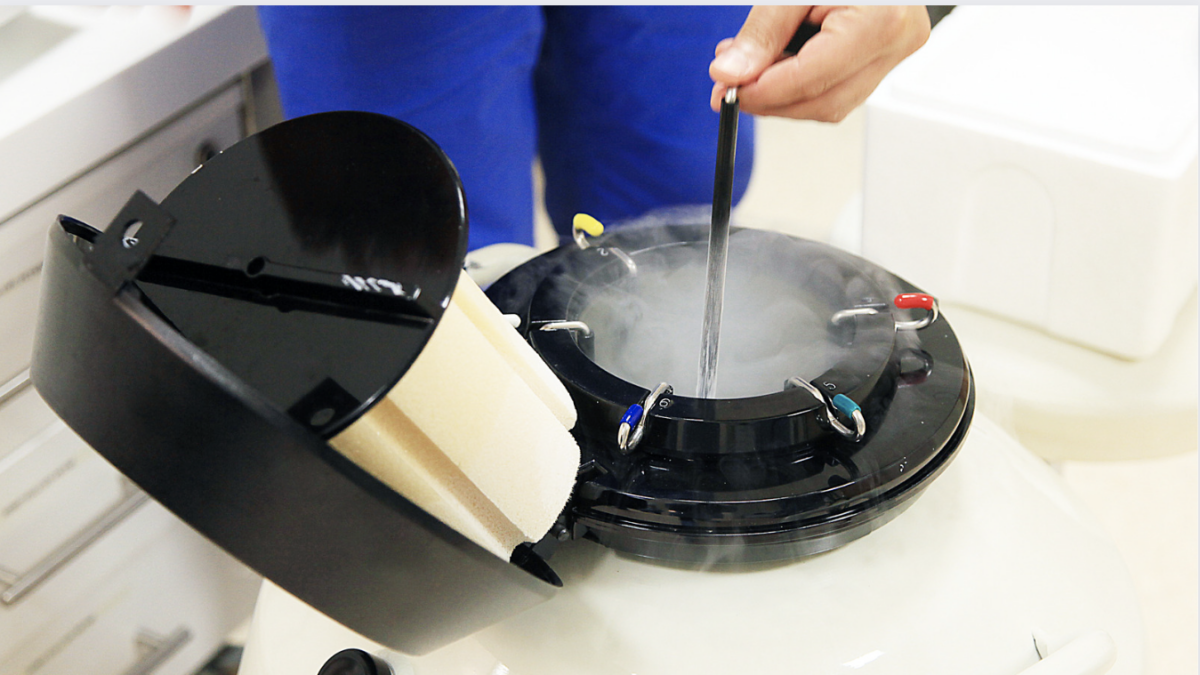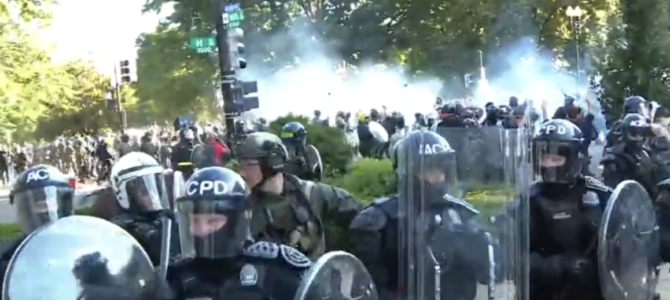
After the media reported that Park Police deployed tear gas, an aerosolized version of the synthetic compound 2-chlorobenzalmalononitrile also referred to as “CS gas,” to disperse protesters in front of the White House, Park Police explicitly denied the charge:
To curtail the violence that was underway, the USPP, following established policy, issued three warnings over a loudspeaker to alert demonstrators on H Street to evacuate the area. Horse mounted patrol, Civil Disturbance Units and additional personnel were used to clear the area. As many of the protestors became more combative, continued to throw projectiles, and attempted to grab officers’ weapons, officers then employed the use of smoke canisters and pepper balls. No tear gas was used by USPP officers or other assisting law enforcement partners to close the area at Lafayette Park. Subsequently, the fence was installed.
So it was smoke canisters, not tear gas. And pepper balls explained the irritating effect that some protesters reported.
This directly contradicted thousands of tweets, print articles, and broadcast stories. President Donald Trump lambasted the media, highlighting a story this writer published yesterday. That article has some of the headlines from prominent media that falsely claimed “tear gas” was used against “peaceful” protesters.
His campaign requested corrections for the rampant publishing of false news. The media believe admitting error is a display of weakness, a belief Trump shares, so they didn’t admit the error or correct their stories. Instead, they claimed that they were essentially correct. Clinging to a CDC information sheet that ambiguously said “sometimes” (but not other times) a variety of things are called “tear gas,” they defiantly announced they would refuse to correct their erroneous stories.
In response to New York Times reporter Maggie Haberman saying tear gas and pepper spray are kind of the same thing, if looked at in a particular way, one Twitter user responded with screen shots of four New York Times headlines, adding “48 hours ago the @nytimes seemed to think they were different enough to mention separately in the headline…:”
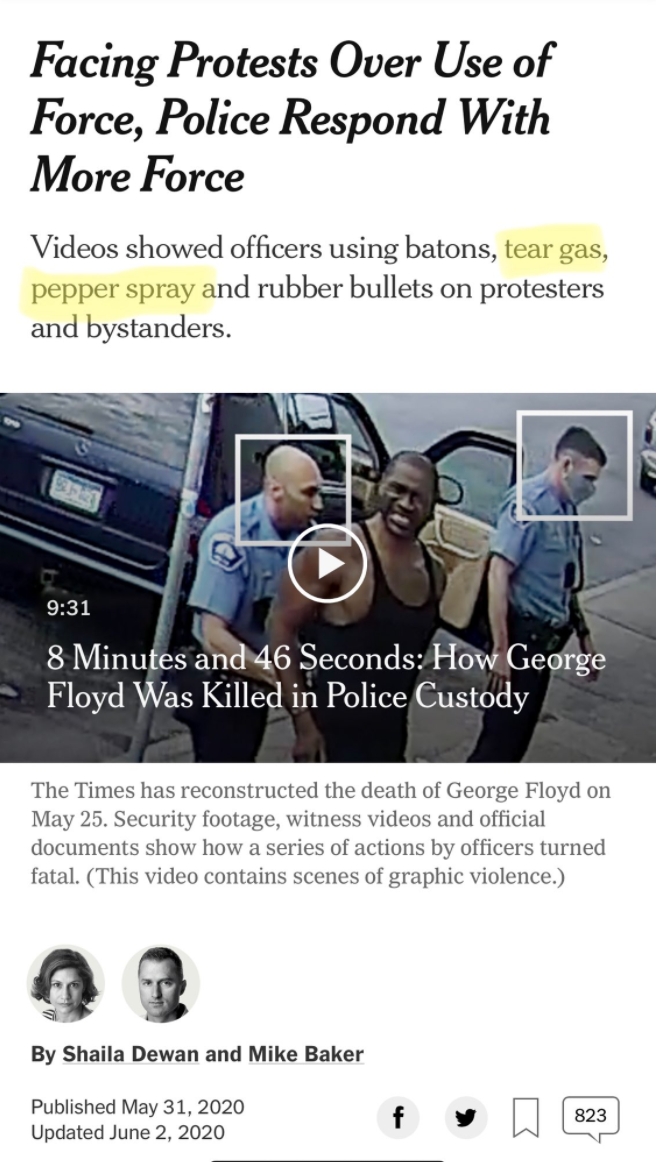
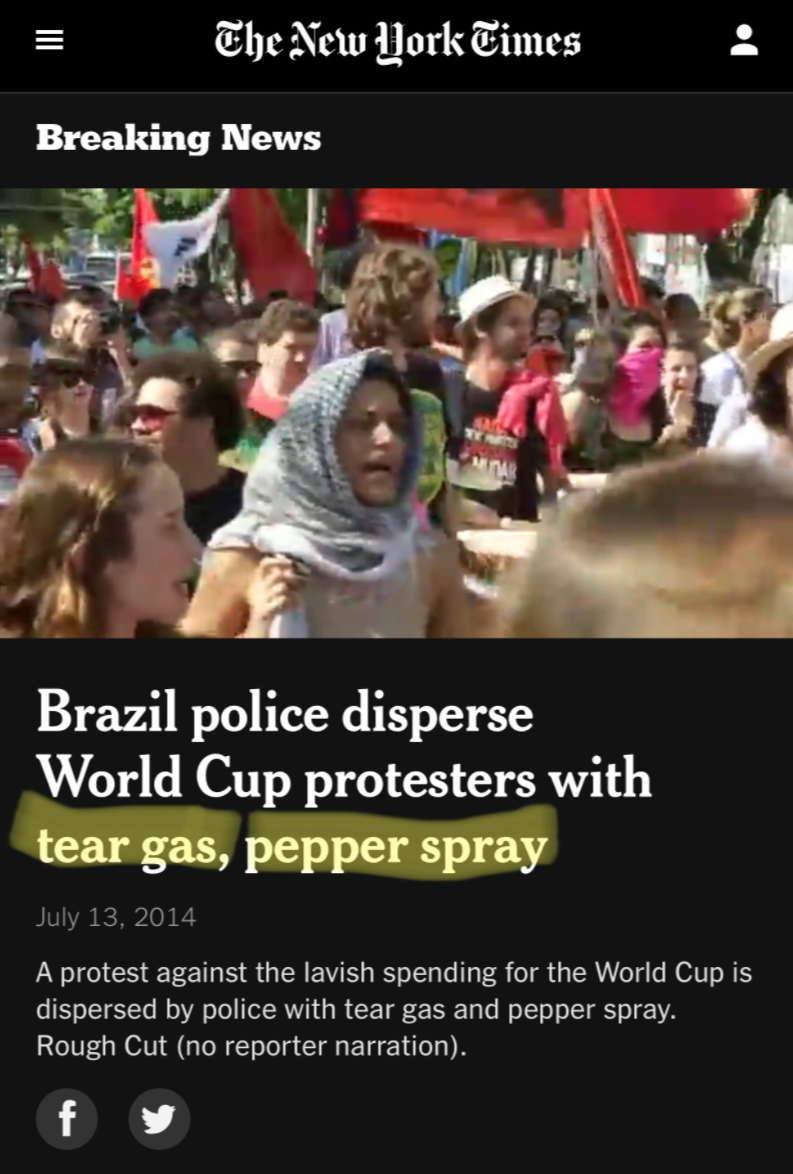

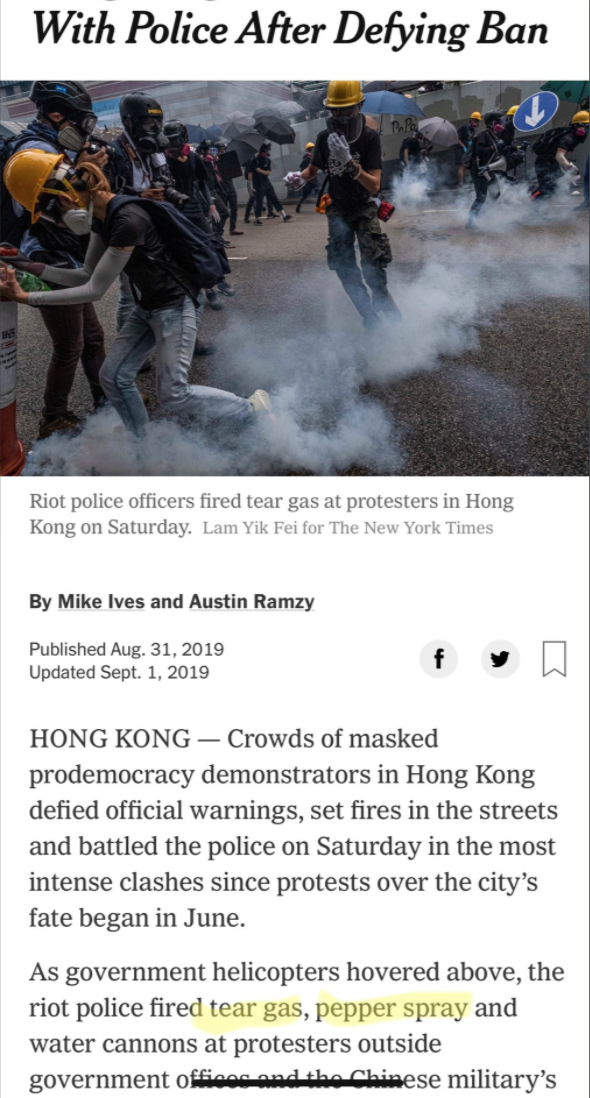
It wasn’t just the New York Times. Until the precise moment that Trump wanted a correction, media had always separated tear gas from pepper spray.
Of the hundreds of Washington Post stories that mention pepper spray separately from tear gas, some were published in recent days. Samantha Schmidt, Rebecca Tan, Rachel Chason and Paul Schwartzman separated the riot control measures on May 31 as “law enforcement officers deployed tear gas, pepper spray and rubber bullets to move the crowd back…” Similarly, a May 31 video from the Post is headlined, “In U.S. cities, police use pepper spray, stun guns and tear gas on protesters.” There are hundreds of other examples.
Media told people that they could “see” the tear gas canisters with their own eyes, but now they must concede that those were in fact smoke canisters. So then they said that the irritant from pepper balls are the same thing as tear gas.
If tear gas and pepper spray are identical and interchangeable, as media now assert, then why were they so hell-bent on exclusively using the term “tear gas”? The answer is obvious. Pepper spray is a common device regularly carried by civilians, often women, to protect themselves from potential predators. You can easily buy it at the store or online. “Tear gas” has a far more incendiary connotation, as it is rarely used by anyone other than authorized law enforcement. The two chemicals are wildly different, though, which is why you will never see law enforcement use tear gas without gas masks because of its debilitating effects on the lungs. Tear gas uses an aerosolized synthetic compound to irritate the lungs and make breathing difficult. Pepper spray and pepper balls, on the other hand, are made from capsicum, the oil that gives vegetable peppers their distinctive flavor.
The effects of pepper spray can be quickly mitigated by milk, which neutralizes the oils that irritate the eyes. Milk has no effect on tear gas. Footage of what happened in Lafayette Park, to eyes trained to see facts rather than narratives, made clear that tear gas was never used. Police wore no masks. A protester was seen pouring milk on his face. Law enforcement walked through the smoke and fog, which media claimed was tear gas, with no ill effects whatsoever.
Even just hours ago the media were admitting the specific difference between tear gas and pepper balls as it relates to Monday’s protest. MSNBC reporter Garrett Haake, who led the charge regarding tear gas, was insistent that the police had used “tear gas (CS)” and not just “pepper balls and less lethal projectiles.” He was specifically asked about why he was so sure about tear gas, and not just pepper balls, and he said it was because of his experience. See here:
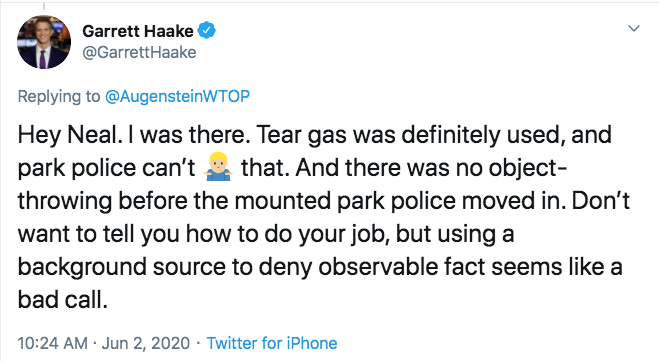
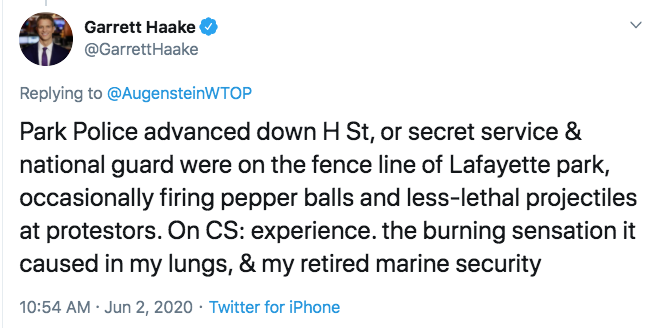
Of course both tear gas and pepper spray can and are used by police to disperse rioters, both can be abused by police against innocent civilians, and both are painful. Still, the media knew the distinction was important enough yesterday. Now they claim it’s no matter at all.
Why care about getting this particular fact correct? It’s worth taking a step back and reviewing the larger situation of how small errors become uncontrollably false political narratives.
On Monday night, protesters in front of White House grounds were cleared just before a 7 p.m. curfew. Some protesters in the area had torched a building on White House grounds and a nearby historic church the night prior.
The Park Police say that they removed the protesters because they had found caches of weapons on the street and that some protesters were “violent” and had begun throwing “bricks, frozen water bottles and caustic liquids,” and climbing a building on White House grounds that had previously been destroyed by arson. Attorney General Bill Barr reportedly authorized the removal so a temporary security fence that had begun to be installed that day could be completed.
As the area was being cleared, President Donald Trump delivered remarks from the Rose Garden about the need for rule of law over the chaos of violent riots. After, he walked through the cleared area to St. John’s Church, which had been set on fire by protesters hours earlier, and held up a Bible.
The power of the imagery being impossible to ignore, almost immediately the media began reading off of shared talking points: Park Police had used “tear gas,” an aerosolized version of the synthetic compound 2-chlorobenzalmalononitrile also referred to as “CS gas,” to disperse uniformly peaceful protesters for nothing more than a grotesque photo op. We live in a time of information warfare, where the media are more brazenly advocating for political positions against millions of Americans including the President himself.
The media wanted to hammer their political talking point home until it replaced the image of President Trump walking through an area that the night before had been given over to lawless mobs. So repeat they did: Tear gas, peaceful, photo op. Tear gas, peaceful, photo op. Tear gas, peaceful, photo op.
They would repeat it as much as necessary to replace the images of the buildings on fire, the rampant looting, the physical assaults — and a political leader walking through these areas to say the mobs would not triumph over Americans and rule of law.
There were elements of truth hidden among the deception. It was of course a “photo op,” in the same way that nearly all public things politicians do are photo ops. It is a common trope, in fact, for politicians to ride subways after accidents, or fly over areas devastated by hurricanes, or walk through areas beset by violence. Trump didn’t invent this common political maneuver and it’s not usually considered bad for politicians to not just speak but show what they intend to convey.
And there were of course peaceful protesters, even if everyone knows that the peaceful protests have been beset by horrific violence across much of the country. That some police were injured on Monday night in Lafayette Park from bricks and rocks being thrown doesn’t mean everyone was throwing bricks and rocks at police or planning more violent attacks with caches of weapons police said they found on the street. That some people were grabbing for their weapons, according to the Park Police, doesn’t mean everyone was threatening the peace that way.
Only a media that willfully downplayed the violence across American cities, that has led to death, injuries, widespread property destruction, fires, looting, and more, would claim that the police sound crazy to be discussing the violence they faced on Monday because some other group of people on the street were peaceful.
And even with the completely false claim of tear gas being used, it wasn’t invented out of whole cloth. Smoke canisters were clearly deployed, and pepper balls were also used. Pepper balls can be quite irritating.
But “public display” doesn’t sound as nefarious and dismissive as “photo op” does. “Partially violent” doesn’t sound as sympathetic as “peaceful” does. And “irritant” doesn’t pack the powerful punch that “tear gas” does.
The media chose political messaging over factual reporting. And it’s not nitpicking to demand precision on these things from an industry that claims to report accurately. Each falsehood by the media was used in a direction that was hostile to those Americans who don’t share the dominant media position that America is irredeemably evil.
For people who are adamant that the violent riot portion of protests be downplayed or ignored, even pepper balls are an egregious violation. But for those who see how millions of mistruths pile upon each other to create false narratives that always go in the same political direction, facts still matter and are worth fighting for.



